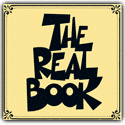Clave
The clave rhythm, a foundational element in Afro-Cuban music, is more than just a pattern; it’s a philosophical cornerstone that underpins the structure and feel of various music genres across the globe. Its influence extends beyond Cuban music to jazz, African music, and even pop, illustrating its universal appeal and versatility. Understanding the clave rhythm offers insight into not only a musical pattern but also a rich cultural heritage and history.
The word ‘clave’ means ‘key’ in Spanish. It’s not to do with tonality as the term ‘key’ usually refers to, but instead, the clave holds the music together like a keystone.
The term “clave” refers both to a rhythmic pattern and the pair of hardwood sticks used to produce it. The clave rhythm is traditionally played in a two-bar, ten-beat pattern, which can be categorized mainly into two types: the “Son Clave” and the “Rumba Clave.” The Son Clave, more common in popular music, comes in both 3-2 and 2-3 patterns, referring to the distribution of beats across the bars. The Rumba Clave, with a slight variation in the second bar, is more deeply rooted in folk traditions.
Historically, the clave rhythm has its origins in West African music traditions, brought to Cuba by enslaved Africans. Within these communities, the clave became a musical expression of identity and resistance, blending with Spanish influences to form the rich tapestry of Cuban music. This pattern became central to the development of genres such as son, rumba, mambo, salsa, and later influenced many other music styles around the world.
Clave theory, as explored in scholarly works and practical applications, illuminates how the rhythm acts as a guide for both musicians and dancers, providing a framework within which to improvise and communicate. The clave’s omnipresence in Afro-Cuban music is such that it dictates the arrangement of melodies, bass lines, and the structure of entire compositions. It’s a musical and cultural linchpin, a testament to the rhythmic genius of African and Cuban ancestors.
Modern interpretations of the clave rhythm have seen it infuse jazz, where musicians like Dizzy Gillespie and Mario Bauzá introduced it to a broader audience, thereby birthing Latin jazz. In pop and electronic music, the clave rhythm underlies beats that move global audiences, proving its timeless relevance.
Understanding clave is crucial for any musician or enthusiast of rhythm. It’s not merely about the beats but the spaces between them, the tension and release, and the conversation between musicians. The clave rhythm, in its simplicity, encapsulates the complexity of human expression, bridging continents and cultures through the universal language of music.
Son clave has strokes on 1, 1a, 2&, 3&, 4.
Rumba clave has strokes on 1, 1a, 2a, 3&, 4.
In music, “clave” refers to a sequence of rhythmic accents, systematically superimposed onto a song’s underlying groove. This layering enriches the texture, allowing the ensemble to maintain a conventional rhythm while also highlighting specific beats. Not limited to any one beat, the clave’s accents are pivotal in shaping the rhythmic landscape across various music genres, lending each a distinctive pulse.
The essence of clave rhythm lies in its uneven distribution of accents across measures, breaking away from the uniformity typical of standard time signatures like 2/4 or 4/4. This departure from symmetry sets it apart from genres such as rock, pop, hip hop, funk, and country, which rarely incorporate the Afro-Caribbean rhythmic heritage. By integrating clave, musicians ensure that successive measures feature a unique accentuation pattern, imbuing the music with a rich, rhythmic complexity.
Clave rhythms manifest in numerous forms within Latin music, with the son clave from Cuba being particularly prevalent in mainstream music. The rhythm not only serves as a structural element but also shares its name with a percussion instrument comprising two wooden sticks. These sticks produce a piercing sound, cutting through the ensemble to anchor the rhythm.
The clave rhythm is accessible to all musicians, regardless of their instrument, because it constitutes a pattern of accents rather than specific pitches. This universality underscores the rhythm’s foundational role in musical composition and performance.
Specifically, the son clave rhythm is articulated in two variants: the 3:2 and the 2:3 claves. The 3:2 son clave spans two measures, accenting three beats in the first and two in the second, offering a rhythm that might recall the beats of “I Want Candy” by The Strangeloves for those familiar with ’60s pop music. Conversely, the 2:3 son clave inverts this pattern, emphasizing two beats in the first measure and three in the subsequent one, showcasing the rhythm’s versatile nature and its pivotal role in the rhythmic foundation of a wide array of musical styles.
Musical Genres That Use Clave Rhythm
Although clave music may not top the charts in the United States, it continues to make its presence known across various forms of popular music. Clave is the primary orienting rhythm in:
- Salsa
- Rumba
- Conga
- Songo
- Son
- Mambo
- Dancehall
- Songo
- Timba
- Afro-Cuban jazz
- Reggae
- Bossa nova
- Samba
- New Orleans jazz
For a rich experience of clave usage, explore the music from the Caribbean, especially Cuba. The musical heritage of Cuba, along with countries such as Haiti, the Dominican Republic, Jamaica, and Barbados, has its roots deeply embedded in the histories of African people forcibly brought to these lands. Different musical styles across these regions don’t uniformly adhere to a single clave rhythm. For example, while rumba clave closely mirrors son clave, a mere change of one eighth note significantly alters its rhythmic impact.
In the context of Brazilian music, bossa nova, which often incorporates son clave, is viewed as a sophisticated genre, contrasting with samba’s widespread appeal as the music of the masses. Samba’s clave rhythm distinctly diverges from bossa nova’s, underscoring the variety within Brazilian musical expression. Furthermore, some Brazilians argue their music doesn’t include clave at all, possibly as a declaration of cultural independence from Cuban influences.
Examples of Famous Songs With Clave
- “Son de la Loma”: This salsa classic (which translates to “they are from the hills”) is a good example of 2:3 clave buried inside a robust full rhythmic pattern. Many recordings exist but check out one by Tito Puente on Lo Mejor De Lo Mejor (1990).
- George Michael, Faith (1987): To repeat, clave patterns go far beyond pure Afro-Cuban music. Listen to the hit title track from this 1987 George Michael album to hear a hard 3:2 son clave in the rhythm guitar.
- Bo Diddley, Bo Diddley (1958): If you’ve ever heard someone use the term “the Bo Diddley beat,” they’re more or less talking about a 3:2 son clave. Listen to this debut recording from the R&B guitar legend to hear for yourself.
- Santana, “Oye Como Va” (1970): This song was originally composed by the aforementioned Tito Puente, but the Santana version is the most famous rendition, as it introduced clave and other Latin rhythmic ideas to a rock audience.




